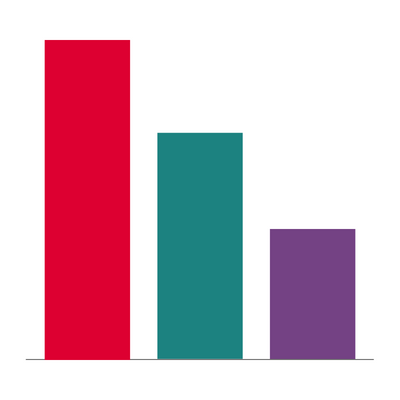Health care funding
Three key questions about funding in England
19 March 2024

This page was originally published on 20 March 2023 and updated on 19 March 2024. This analysis is based on the March 2024 economic forecast from the Office for Budget Responsibility (OBR) and Treasury figures on spending plans from March 2024. It will next be updated when the OBR publishes its next economic forecast later this year. All real-terms figures are based on 2024/25 prices.
Total health spending
- In 2022/23, the last year of confirmed final spending data, total health spending in England was £182bn, having increased by an average of 5.5% a year in real terms since 2019/20.
- Planned total health spending will increase to £192bn in 2024/25 but inflation means that, on current plans, this would equate to a small increase of 0.6% in real terms compared with 2023/24 and a real-terms reduction in funding compared with 2022/23.
- Over this parliament as a whole (2019/20 to 2024/25), current plans would mean health spending increasing by an average of 3.0% a year in real terms, below the long-term (1979/80 to 2019/20) average growth rate of 3.8% (but above the 1.4% average growth rate between 2010 and 2019).
- At the Spring Budget 2024, £3.4bn in capital funding between 2025/26 and 2027/28 was also announced for digital and technological transformation and to support an NHS productivity plan.
NHS budget
- The 2024 Spring Budget also announced an increase of £2.5bn to NHS England’s planned budget for 2024/25. In real terms, this means the budget remains relatively flat, increasing by 0.2% from 2023/24 to 2024/25.
- Adjusting for population growth, the average real-terms annual growth in NHS spending over the parliament falls to 1.9% per person, and 1.7% per person when also adjusted for the ageing population. Between 2022/23 and 2024/25, when adjusted for population size and ageing, the planned NHS England budget will have decreased by an average of 1.6% per year in real terms.
- Other pressures, including the potential for further industrial action and any additional pay agreements could mean that the budgets for 2024/25 are revised.
Figure 1
Figure 2 shows a longer term breakdown of what the DHSC total budget is spent on and how this has changed since 2013/14.
Figure 2
Figure 3
Table 1: Average real-terms growth in DHSC TDEL by administration
| Government | Time period | Annual growth |
|---|---|---|
| Thatcher and Major Conservative governments | 1978/79 to 1996/97 | 2.8% |
| Blair and Brown Labour governments | 1996/97 to 2009/10 | 6.7% |
| Coalition government | 2009/10 to 2014/15 | 1.1% |
| Cameron and May Conservative governments | 2014/15 to 2019/20 | 2.6% |
| Johnson, Truss and Sunak Conservative government | (2019/20-) | |
| Outturn | 2019/20 to 2022/23 | 5.5% |
| Planned | 2019/20 to 2024/25 | 3.0% |
| Long-term average (England) | 1979/80 to 2019/20 | 3.8% |
Source: HMT Spring Budget 2024, House of Commons NHS Funding Expenditure (Briefing paper, January 2019, OBR EFO March 2024.
Note: The table shows real-terms average growth rates for DHSC TDEL calculated using the March 2024 GDP deflator from the OBR. For growth rates starting after 2019/20 provider depreciation is excluded. The long-term average growth for England spending is 3.8%, slightly higher than the growth rate in UK-wide health spending (3.6%) calculated over the period 1949/50 to 2019/20. Note, the time period refers to the data available.
Turning to NHS England specifically, under current plans, annual funding growth is 3.2% in real terms between 2018/19 and 2023/24, compared with the 3.4% annual real terms increase that was envisioned as part of the NHS Long Term Plan. Between 2019/20 and 2024/25 (the parliamentary term), current plans equate to 2.5% per year average funding growth in real terms.
Figure 4
Further reading
Work with us
We look for talented and passionate individuals as everyone at the Health Foundation has an important role to play.
View current vacanciesThe Q community
Q is an initiative connecting people with improvement expertise across the UK.
Find out more

